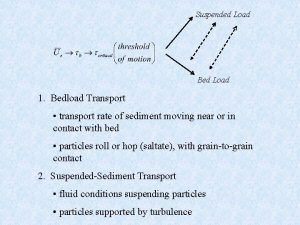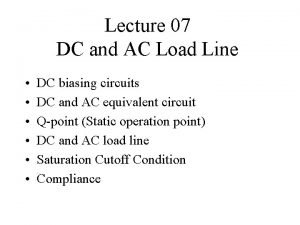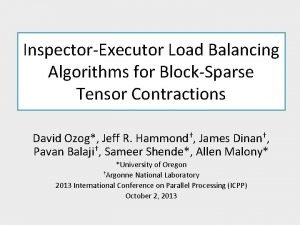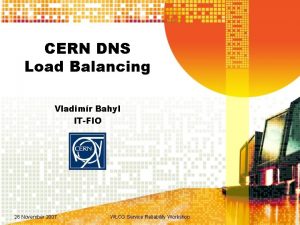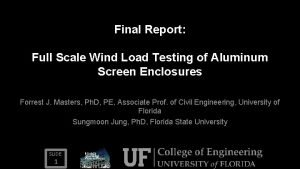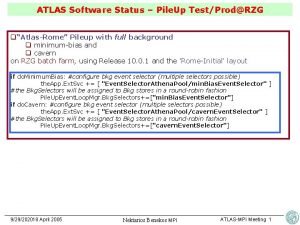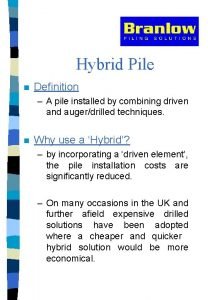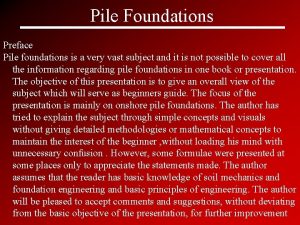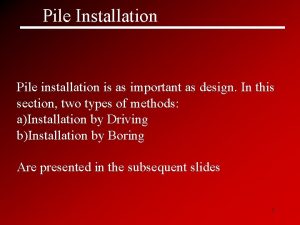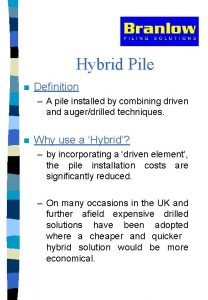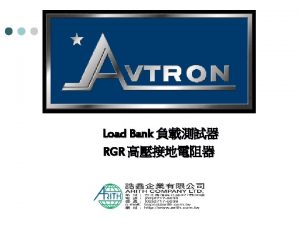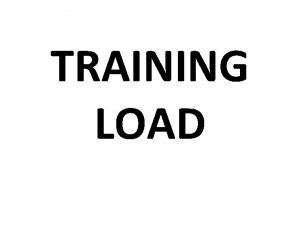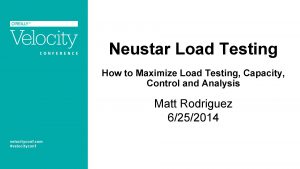PILE TESTING 2 Dynamic Load Testing Mike Turner




















- Slides: 20

PILE TESTING (2) (Dynamic Load Testing) Mike Turner (Applied Geotechnical Engineering)

Types of load testing You will recall that we highlighted: n Static load testing Maintained Load (ML) Constant Rate of Penetration (CRP) n Dynamic load testing

Dynamic load tests on micropiles Features (again): High slenderness ratio (=Aspect Ratio) n Relatively high elastic shortening n This Implies: n Long piles = large pile head settlement Want to discuss: n Comparison with Static load tests

Dynamic load testing Features: n Striking the pile top with a falling mass n Pile-driving hammer Pile head: n Reinforced and cast to accept the impact n Pile top movement/velocity and force applied are measured

Dynamic load testing (2) Measurement: n Accelerometer to measure velocity n Strain gauge to measure force n Electronic theodolite to measure penetration and elastic displacement (‘quake’)

Dynamic load testing (3) Interpretation: n Pile resistance = dynamic + static resistance n Identify and separate out ‘dynamic’ effects n Leaving static effects n Modern-day Hiley or ENR formula n Needs calibration

Dynamic load testing (3) Techniques and systems: n ‘Case’ and CAPWAPC n TNOWave, Pi. D, SVIDYN n Simbat (CEBTP)

Dynamic load testing (4) Aim of the test: n To produce a ‘conventional’ load versus settlement relationship for the pile So. . Let’s look at some results …. .

Pile length vs Pile head settlement at working load: Dynamic load tests (rock)

Pile length vs Pile head settlement at working load: Dynamic load tests (rock) (2) 0. 7 mm/m 0. 36 mm/m 0. 15 mm/m

Summary (1) For a wide variety of rocks: Gross pile settlement at working load is n Proportional to pile length n Around 0. 36 mm/metre n (As high as 0. 7 to 0. 9 mm/metre) n (As low as 0. 15 mm/metre) n Independent of diameter (Again!)

Summary (2) Comparison with static tests Tests on micropiles socketed into rock (Gross pile settlement at working load) Static Av. 0. 35 mm/metre Max. 0. 4 mm/m Min. 0. 2 mm/m Dynamic Av. 0. 36 mm/metre Max. 0. 7 -0. 9 mm/m Min. 0. 15 mm/m

Still spooky!

Pile head settlement vs working load: Dynamic load tests (rock)

Pile head settlement vs working load: Dynamic load tests (rock) (2)

Pile head settlement vs working load: Dynamic load tests (rock) (3) 0. 005 mm/k. N 0. 01 mm/k. N

Summary (1) For a wide range of rock type (and pile size): Gross pile head settlement at working load: n Averages around 0. 01 mm/k. N at 100 k. N SWL reducing to approx 0. 005 mm/k. N at 1200 k. N. n Does not show a linear relationship n Not so independent of length?

Summary (2) Comparison with static tests Tests on micropiles socketed into rock Gross pile settlement at working load is: Static Av. 0. 01 mm/k. N Max. 0. 035 mm/k. N Min. 0. 005 mm/k. N Dynamic Av. 0. 01 to 0. 005 mm/k. N Max. 0. 018 mm/m Min. 0. 0045 mm/k. N

Conclusion/discussion To be continued ……. but …. . ……. Some points to ponder……. . At design working load: n DLT and Static testing appear to give generally comparable load/settlement results n However, DLT gives greater scatter n Are values such as 0. 35 mm/m ‘reasonable’? n Are values such as 0. 01 mm/k. N ‘reasonable’

………. . Thank you!
 Cs3250
Cs3250 Axial load and radial load
Axial load and radial load Load paths
Load paths Bed load and suspended load transport
Bed load and suspended load transport Quiescent point
Quiescent point Dynamic load balancing on web server systems
Dynamic load balancing on web server systems Dynamic load balancing
Dynamic load balancing Dynamic dns load balancing
Dynamic dns load balancing Transferered
Transferered Hp stormrunner
Hp stormrunner Asp net load testing
Asp net load testing Load testing standards
Load testing standards Wind load testing
Wind load testing Difference between performance and load testing
Difference between performance and load testing Load testing browsermob
Load testing browsermob Load testing milano
Load testing milano Wapt load testing tool
Wapt load testing tool Kinematic equations examples
Kinematic equations examples Pile tcp ip
Pile tcp ip Atlas pile driving
Atlas pile driving Esercizi pile a concentrazione
Esercizi pile a concentrazione



